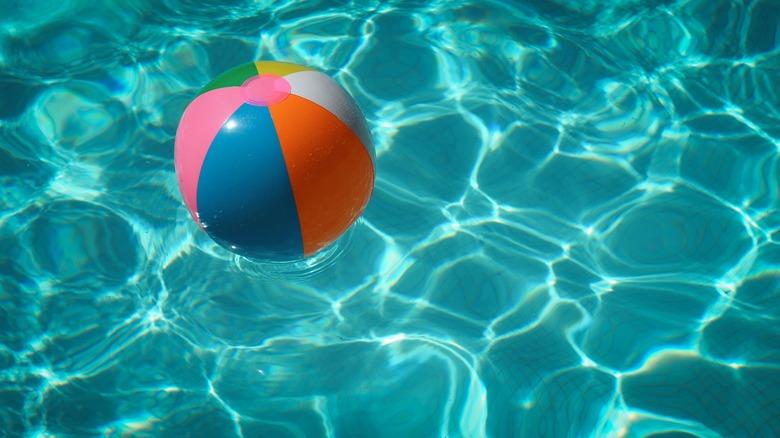Problems With Intex Saltwater Chlorinators
We may receive a commission on purchases made from links.
The Intex Krystal Clear salt water system is a popular chlorinator intended for use with above-ground pools. This system is easy to install and use, and when it's working properly, it maintains the the required chlorine level by electrolyzing salt in the water. Although the system gets good reviews in general, a number of consumers have reported problems with faulty error codes indicating too much or too little salt in the water. In most cases, these faults are due to scale build-up on the electrolysis plates.
How a Chlorine Generator Works
How a Chlorine Generator Works
A salt water generator takes advantage of the fact that one of the elements in common table salt is chlorine. (Chemically, table salt is NaCl2—one sodium atom bonded to two chlorine atoms.) With a generator installed, you can dissolve enough salt in the pool water to bring the concentration to about 3,000 ppm. You add salt directly to the pool water—the Intex system does not have a salt reservoir.
As a pump circulates the water through the generator, electrolysis plates ionize the salt to produce free chlorine. As long as the salt level remains sufficiently high and the generator works for a sufficient amount of time, the generator can maintain enough free chlorine to keep the pool water sanitized.
Several problems can occur with this system, as described below
Calcium Buildup on the Plates
Calcium Buildup on the Plates
Electrolytic chlorine generation creates calcium scale as a by-product, and this can quickly build up in the electrolytic cell. This buildup can be responsible for a number of error codes. To clean the cells, the manufacturer recommends removing them and either washing them off with a garden hose or placing them in a vinegar solution overnight. The recommended solution consists of 1 cup of vinegar and 2 gallons of water.
Codes 91 and 92
Codes 91 and 92
The LED display in the Intex chlorinator can display a number of error codes, and two of the most common are 91 and 92. Code 91 indicates the salt level is too low, and Code 92 indicates it's too high. Whenever you see these codes, it's important to test the water before doing anything else, because the code may be an error.
If the level is too low, add salt according to the pool volume and the amount you need to raise the level. You can find a table to help you calculate how much to add in the product manual. If the salt level is too high, the only remedy is to drain some of the water out of the pool and replace it with fresh water. The manufacturer recommends draining 20 percent of the water.
When you get a Code 91 and you find that the salt concentration is correct, it usually means the electrolytic cell needs maintenance. Remove it and immerse it in vinegar to clean off the scale. Any malfunction after doing this requires professional attention, because the cell may be faulty.
Code 90
Code 90
A Code 90 error message means that insufficient water is flowing through the generator. This is often due to one or more valves being closed when they should be open, but it can also indicate a clogged filter. If the error persists—even after checking the valves, making sure all the lines are properly attached, and cleaning the filter—there could be an airlock. Spray pressurized water through the system to clear it. Still get Code 90? The sensor may be caked with calcium deposits, it may be loose, or it may need to be replaced.
Copper Staining
Copper Staining
The electrolytic plates are made from copper, and they release copper ions into the water. This is a good thing, because copper kills algae, but too much of a good thing can stain the pool. Copper ion concentration should be below 0.2 ppm. If it gets any higher, you can add aluminum sulfate to bring it down, but in extreme cases, you may have to drain 20 percent of the water and replace it. Clean copper stains with vinegar or lemon juice, and avoid aggressive cleaners and scrubbing that may etch pool surfaces.
Insufficient Chlorine Sanitization
Insufficient Chlorine Sanitization
Ideal chlorine levels are between 1 and 3 ppm. If they fall below that, the pool water may turn cloudy or algae may turn it green. Assuming the salt concentration is correct, you can increase the chlorine level by running the generator more often and for longer periods. Chlorine doesn't sanitize well in alkaline water, so pH regulation is a must. You should add muriatic acid or dry acid to bring the pH down if it's higher than 7.6. The ideal pH is between 7.2 and 7.6.
Chlorine levels decrease rapidly in the sun unless you add cyanuric acid (stabilizer) to the water. If the CYA concentration is within a range between 20 ad 50 ppm, however, and the chlorine levels remain low, that probably indicates that the electrolytic cell needs to be cleaned.
